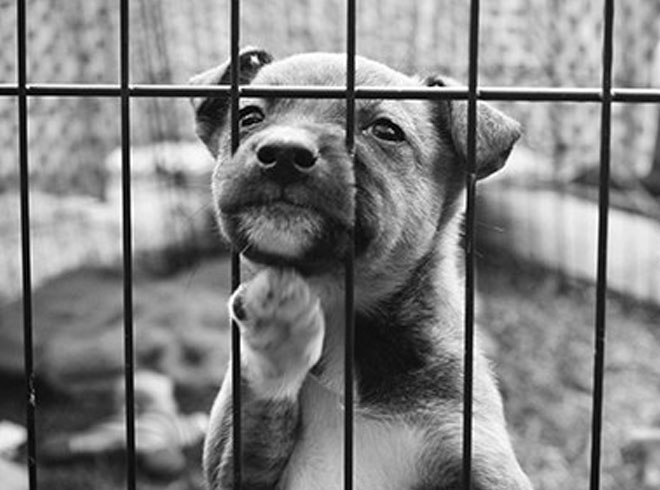
By the FBI
Acts of cruelty against animals are now counted alongside felony crimes like arson, burglary, assault, and homicide in the FBI’s expansive criminal database.
On January 1, 2016 the Bureau’s National Incident-Based Reporting System (NIBRS) began collecting detailed data from participating law enforcement agencies on acts of animal cruelty, including gross neglect, torture, organized abuse, and sexual abuse – and is included for the first time in the recently released FBI’s 2016 NIBRS Crime Data Report.
Before last year, crimes that involved animals were lumped into an “All Other Offenses” category in the FBI’s Uniform Crime Reporting (UCR) Program’s annual Crime in the United States report, a survey of crime data provided by about 18,000 city, county, state, tribal, and federal law enforcement agencies.
By adding animal cruelty offenses to NIBRS, law enforcement agencies and the advocacy groups that pushed for the inclusion in the FBI database are hoping the results will reveal a more complete picture of the nature of cruelty to animals.
“Some studies say that cruelty to animals is a precursor to larger crime,” said Nelson Ferry, who works in the Bureau’s Criminal Statistics Management Unit, which manages NIBRS.
“That’s one of the items that we’re looking at.”
(People who hurt animals are more likely to escalate their abuse to humans, but a new way of reporting could reduce both types of abuse. Courtesy of 41 Action News and YouTube. Posted on Jan 7, 2016)
The National Sheriffs’ Association was a leading advocate for adding animal cruelty as a data set in the Bureau’s collection of crime statistics.
The association for years has cited studies linking animal abuse and other types of crimes—most famously, murders committed by serial killers like Ted Bundy, Jeffrey Dahmer, and the “Son of Sam” killer David Berkowitz.
The organization also points out the overlap animal abuse has with domestic violence and child abuse.
“If somebody is harming an animal, there is a good chance they also are hurting a human,” said John Thompson, deputy executive director of the National Sheriffs’ Association.
“If we see patterns of animal abuse, the odds are that something else is going on.”
A first look at NIBRS animal cruelty statistics is available this year as noted above, but it will take at least three to five years for the data to begin showing helpful patterns.
(Learn about a new animal cruelty unit and research linking animal abuse and domestic or child abuse. Courtesy of CBS Sacramento and YouTube. Posted on Nov 9, 2017)
Groups that advocated for the new animal cruelty data hope that by adding it to NIBRS—rather than the summary-based statistics agencies provide the Bureau each year—they will get a much richer data set from which to mine.
That’s because NIBRS requires participating agencies to not only report crimes but also all the circumstances of a crime.
Additionally, the Bureau plans to phase out summary-based UCR statistics—which have been collected roughly the same way since 1930—in favor of NIBRS by 2021.
“With summary data, all I can tell you is a crime occurred,” said Amy Blasher, who is leading the broader transition to NIBRS at the FBI’s Criminal Justice Information Services Division, keeper of the Bureau’s various crime data stores.
“With the incident-based, it’s more granular. It tells the story.”
The move to collect more granular data requires agencies to adjust how they track and disseminate crime statistics.
(See what Robert Ferber, Former Animal Abuse Prosecutor, Los Angeles City Attorney, has to say about the link between animal abuse and domestic violence. Courtesy of Davey’s Voice and YouTube. Posted on Jan 25, 2016)
Only about 31 percent of the country was represented in NIBRS as of last year—a fraction of the overall UCR participants; however, Blasher anticipates the figure to grow larger as law enforcement agencies opt in, including police departments in Washington, D.C. and Chicago over the next two years.

While NIBRS data is not yet nationally representative, to date 6,849 law enforcement agencies (about 37 percent of the country’s law enforcement agencies that participate in the UCR Program) contributed their data to the NIBRS, 2016 report, a 201-agency increase from 2015.
The FBI has been aggressively pushing for the transition to NIBRS.
In a speech last March in Atlanta, former FBI Director James Comey said it was his personal mission to get better data “that we can all use to have informed conversations about the most important issues we face.”
Those who lobbied for better animal abuse data would agree.
“With this information, law enforcement and victim services would be able to better target their intervention efforts with respect to both animal cruelty and those crimes for which animal cruelty serves as a marker,” said Dr. Mary Lou Randour of the Animal Welfare Institute, which worked closely with the National Sheriffs’ Association to advance their cause.

“Identifying and analyzing animal cruelty crimes would provide an important tool for law enforcement.”
The National Sheriffs’ Association’s John Thompson urged people to shed the mindset that animal cruelty is a crime only against animals.
“It’s a crime against society,” he said, urging all law enforcement agencies to participate in NIBRS.
“By paying attention to [these crimes], we are benefiting all of society.”
(This mini presentation on animal cruelty and its nexus with other crimes will help law enforcement officers to understand the relationship between animal cruelty and other violence offenses. Courtesy of the National Sheriffs’ Association and YouTube. Posted on Oct 19, 2017)
By 2021, NIBRS is scheduled to become the national standard for crime reporting, replacing the Summary Reporting System.
NIBRS provides additional information and context for criminal offenses, and when fully implemented, it will assist law enforcement in using their resources efficiently and effectively.
“Information that is accurate, accessible, and complete enhances and informs conversations about policing,” FBI Director Christopher Wray said in his message in the report.
 FBI Director Christopher Wray
FBI Director Christopher Wray
“It helps us learn how and why crimes occur and what we can do to prevent them from happening in the first place.”
“It helps law enforcement to be more proactive, helps communities use resources more strategically, and it improves the safety of our nation’s citizens and law enforcement officers.”
In the new categories, there were 1,126 animal cruelty cases reported to NIBRS.
Of the more than 250,000 fraud offenses reported by law enforcement to NIBRS in 2016, 22,894 were identity theft offenses and 581 were hacking/computer invasion offenses.

Some additional highlights from NIBRS, 2016:
- Based on aggregate data, NIBRS agencies reported 5,237,106 incidents involving 6,101,034 offenses with 6,437,018 victims.
- There were 4,963,644 offenses with known offenders (in which at least one characteristic of the offender was known.) Of those offenders whose age was known, 43.5 percent were between the ages of 16 and 30. Sixty-three percent of known offenders were men, and 25.6 percent were women. In other cases, sex of the offender was unknown.
- Of the reported offenses, 62.5 percent were crimes against property, 22.7 were crimes against persons, and 14.8 percent were crimes against society (such as gambling or animal cruelty).
- More than half of the victims (52.4 percent) knew their offenders (or at least one of the offenders if the incident included more than one offender). Additionally, 24.3 percent of the victims were related to their offender (or at least one offender if more than one was present.)
- The NIBRS report contains data on 3,261,521 arrestees. Of those who were arrested, 34.1 percent were 21 to 30 years old. More than 71 percent of arrestees were men, and 28.3 percent were women.

















